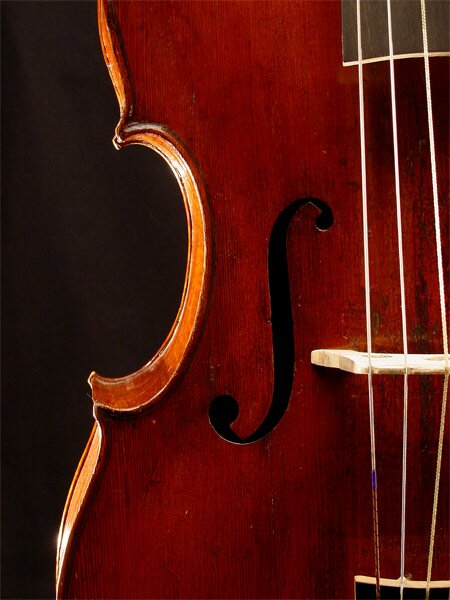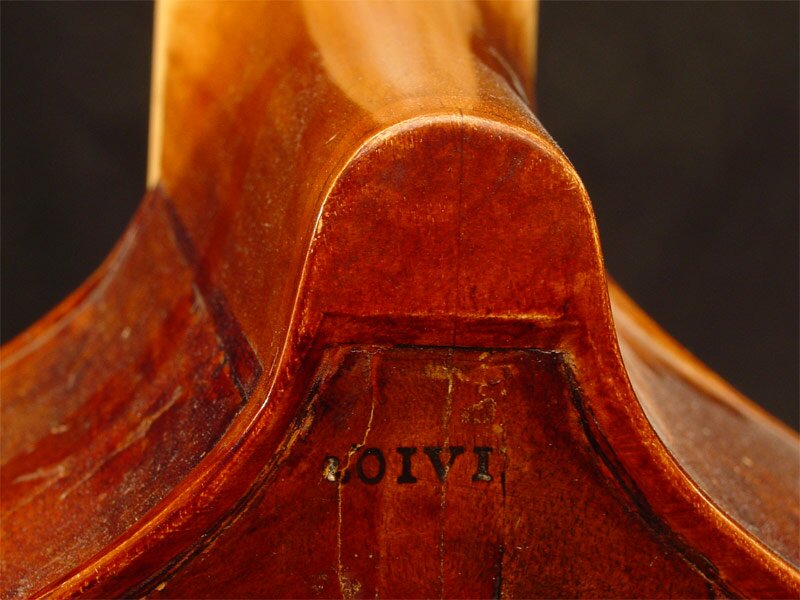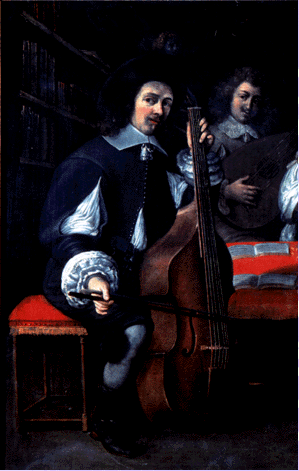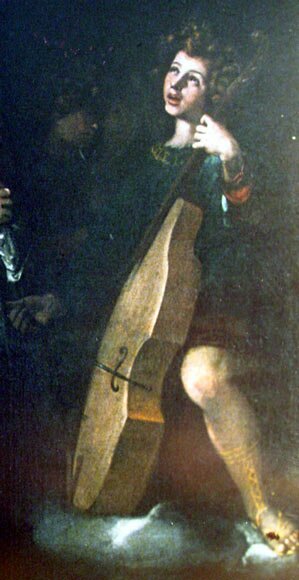Viola da gamba Bass
Claude Boivin, Paris, c. 1740
Catalog 109 – Viola da gamba, bass, Claude Boivin, Paris, ca. 1740
 |
 |
 |
 |


Although many viols in this form appear in painting, the surviving examples have more often than not been transofrmed into violoncelli, thereby losing the sloping of the shoulders. This viola da gamba by the celebrated Parisian instrument maker, Claude Boivin, was purchased while still in cello form. Sometime in the 19th C. the renowned Mirecourt luthier, Nicolas François Vuillaume, active then in Brussels, added wood to the shoulders of the viol to square off at the neck, in cello fashion. This viol was then reconverted to its original form in 2001.
 |
 |
|
| The viol on shown | ||
This first viols of this form date from the 16th Century; iconographic evidence is abundant, both from the Renaissance and the Baroque. Further, a number of extant instruments in private hands and museum collections yield proof to the ubiquitousness of these viols in Europe; indeed one fresco known to me is to be found as far away as St. Petersburg!

The following portrait of Mr. Hotman (ca. 1650), a German virtuoso residing in France, proves that this form is not at all a late development in the evolution of the viol, but that it was very much a part of the scenery in the rather heterogeneous manifestations of the viol throughout its history.

Note the falling shoulders and the f-holes, the low placement of the bridge, the long and thin neck. Jean Rousseau (1687) attributes the thinning of the neck, which he heralds to be an improvement in French viol construction, to his teacher, St. Colombe, but here we have unequivocally iconographical evidence substantially antedating his “Traité de la Viole”.

Yet another example of this type of viol, dating from the beginning of the 17th C. in Spain (Valencia Fine Arts Museum).
Luthiers know to have made viols in this form are:
Gasparo da Salo, Francesco Bertolotti da Salo, Antonio Brensio, Domenico Russo. the Amatis, the Guarneris, Guidantus, the Ruggieris, Stradivarius, Jean Baptiste D. Salomon, the Kloz Family and many others.
 |
 |
See also:
Head and Pegbox of a French Pardessus de viole, 18th C.
For further readings on viols in the shape of violins, see:
1. Violas da gamba in the shape of the violins, but with sloping shoulders
2. Violas da gamba in the shape of the violin
3. Stradivarius and the viola da gamba
4. Violas da gamba with violin corners
Dendocrinology
| Bass | 1762 – 1534 |
|
Treble
|
1721 – 1558 |
| Body length | 668 mm |
|
Upper width
|
327 mm |
| Middle width | 231 mm |
| Lower width | 402 mm |
| Rib height | 122 mm |
| String length | 671 mm |